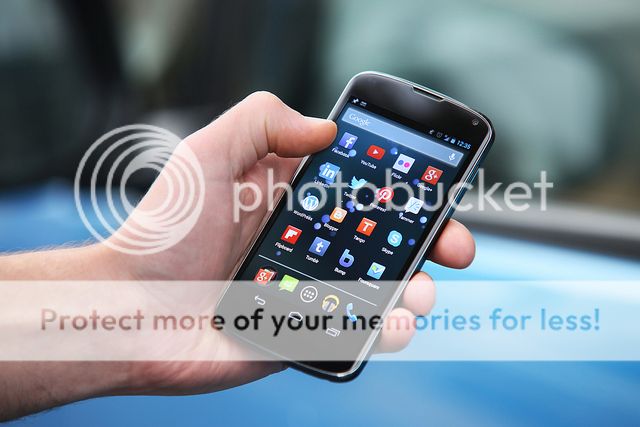In just a few short years, the ubiquity of cell phones has forced text messaging front and center in corporate communications. It wasn’t long ago that SMS text messages were seen as far too casual and informal to have a meaningful role in business communication. My, how times have changed! With team members, customers, and partners on the move, text messaging means quick communication between people without having to be tied to a computer or desk. From quick communications like, “I’m running five minutes late for our meeting but I’ll be there shortly,” to promotional offers like, “Show this message to the clerk for 10% off your order,” SMS text messaging is being used in a variety of ways by businesses both large and small.

Text messaging is now a vital part of business communication.
Image courtesy of Flickr user Highways Agency
Forward-thinking organizations realize that SMS messaging is here to stay. As a result, these organizations understand that best practices and policies surrounding text messages are every bit as important as those regarding email or handwritten communications. If you’ve never thought of SMS messaging as needing set policies or if you simply haven’t found the time to integrate text messages into your communications guidelines, these five considerations should help you manage your team’s use of text messages without limiting the awesome power of this emerging medium.
- Strategy – Involving different departments like Marketing and Human Resources means differing points of view on how text messaging can and should be used in your business. This kind of constructive discussion can only be a good thing as your organization decides how to utilize SMS as a means of communication. What are you trying to accomplish with text messages? Improved intra-company communication? Or increased brand awareness? Answering these questions will go a long way in setting the guidelines of your SMS policies.
- Training and education – Making sure each employee understands not only how to use text messages in the workplace but also what is and isn’t acceptable will go a long way in preventing problems. For example, as with email, voice inflection and tone are absent in text messaging. As a result, it is easy for comments and notes to be misinterpreted by recipients. Train your team on how to communicate clearly in a shorter format and make sure they understand that the same rules forbidding things like sharing sensitive information in emails extend to text messages, as well. Perhaps everyone already knows how to send and receive text messages, but that doesn’t mean you shouldn’t educate them on how to send and receive SMS communications when it comes to a work environment. If you think these rules are obvious, think again. Many employees will be using phones they own and might argue that the rules of the company can’t extend to personal devices. Making the guidelines clear early on should help avoid any issues with team members.
- Management – Mobile Device Management (MDM) software is available to help you deploy updates, patches, applications, and files to employee smart phones and cell phones. Managing the text activity of your employees means having tools that give you insight into the content, frequency, and timeline of their SMS use. Just as you restrict attachments that are sent and received through company email, so should you manage SMS traffic for many of the same reasons.
- Monitoring – These same MDM software tools allow your IT department or managed services provider to monitor SMS messaging from employees. Not only should you be monitoring the content as you would email, it is also wise to monitor things like time of use. For example, do you want your employees texting customers at 11pm at night? What if your clients are texting your employees on the weekends? Do employees know if they are supposed to respond to the client or wait until Monday morning? By monitoring not just content but also usage, you will have the data at your disposal to ensure that your team is texting responsibly and within the company guidelines.
- Security – The greatest threat to the security of a smartphone or cellphone is the physical security of the device. Sure, your employees may have their phones with them all day when they are in the office. But what happens when they leave for the day and go home? What friends or family members are using those devices? Your corporate communications and security are far too important to leave to chance. Every time an employee leaves with a cell phone that includes company emails, contacts, or files, you are trusting them to keep that data safe until they return to the office. That’s a big gamble to take without policies, procedures, and systems in place to protect company information. Two low-cost ways to greatly increase security are to require passcodes on all devices (including employee owned devices), as well as remote-wiping software that will allow your IT department to quickly clear the device of any data in the event it is stolen or lost.
Something else to keep in mind: employee-owned devices
The rise of BYOD (“Bring your own device”) work environments call into question exactly how much authority a business can have over mobile devices that it does not own. If the employee is using a phone they own to communicate with clients and customers, how much control can your management really exert? This is a fairly new topic that will no doubt change over time. Until common standards are accepted, our suggestion is to require mobile device management on any device that has access to the company network. That includes corporate communications.
SMS services give your organization a powerful method of engaging with coworkers and clients, and SMS best practices keep your organization and employees on the same page with regard to how to leverage that engagement. Open and seamless communication means your team can interact with each other, customers, and vendors like never before. That said, because text messages most often originate on devices that may not be owned by your organization, it is imperative that you have a plan and policies in place for how SMS services can be used by employees. Responsibly managing these communications is vital to not just maximizing the benefits of SMS, but also minimizing the chances of data loss, security breach, or someone simply typing the wrong thing and sending it to someone. Click here to learn more about how Mosaic NetworX can help you integrate SMS services into your business operations!




